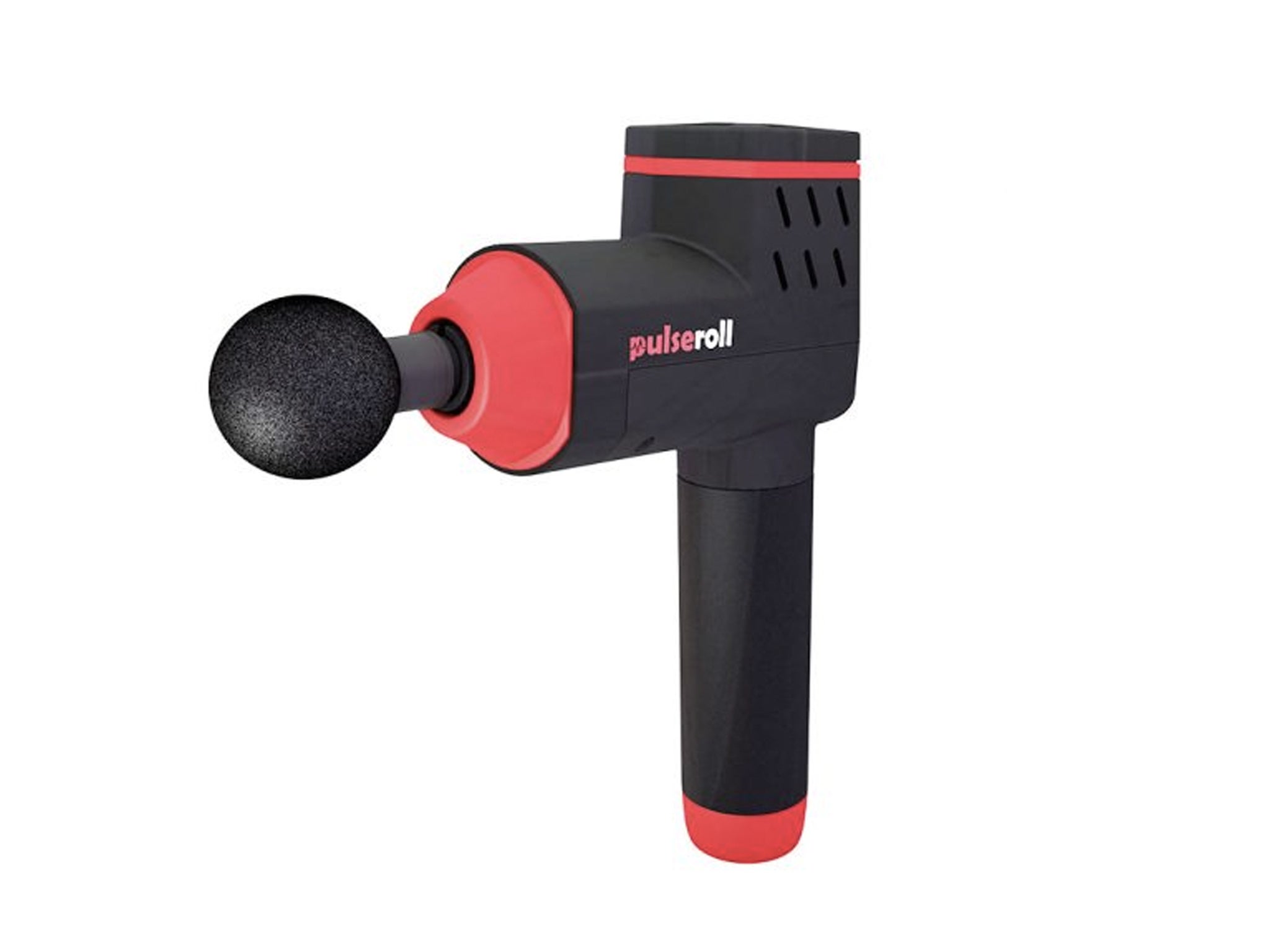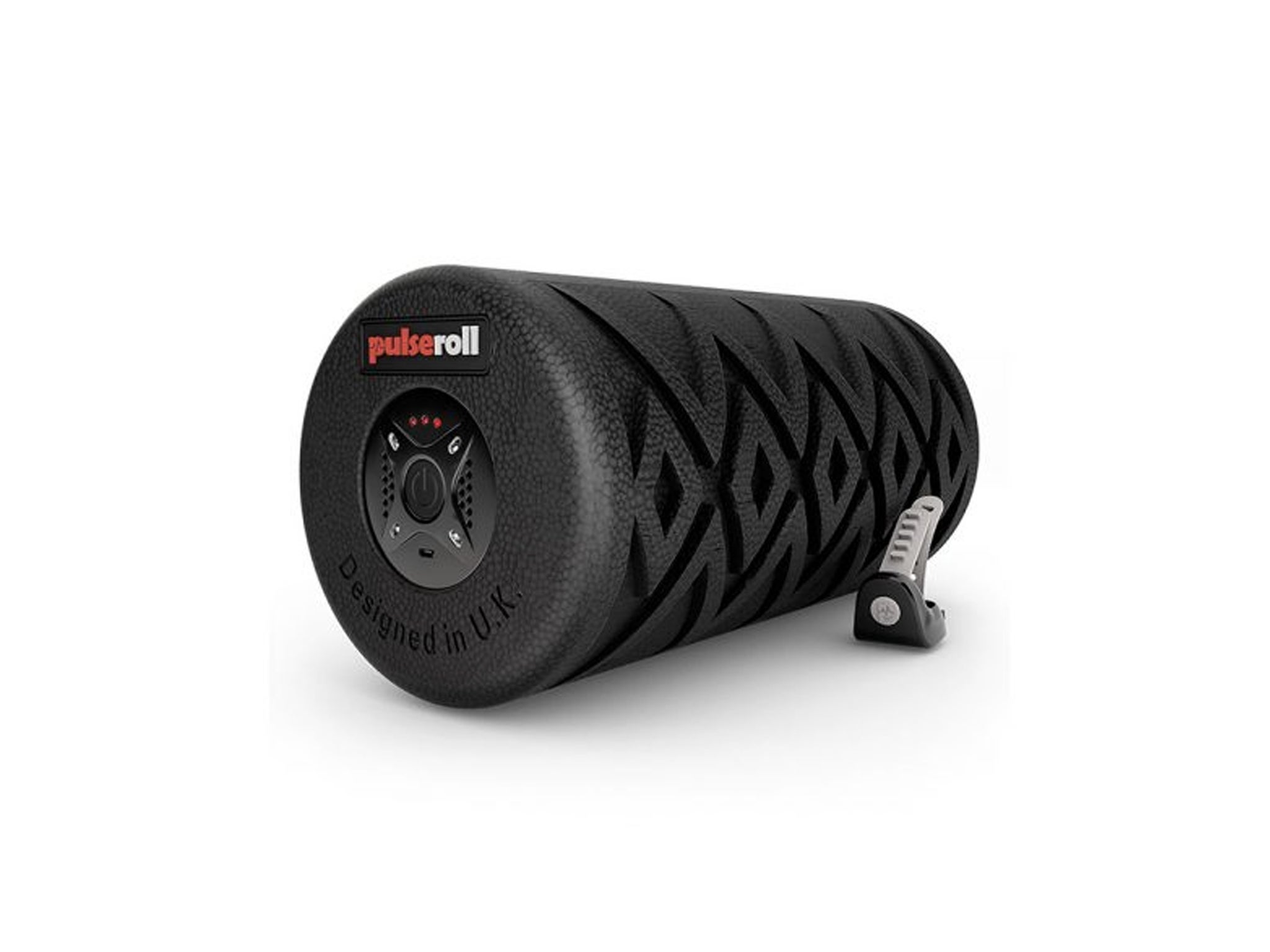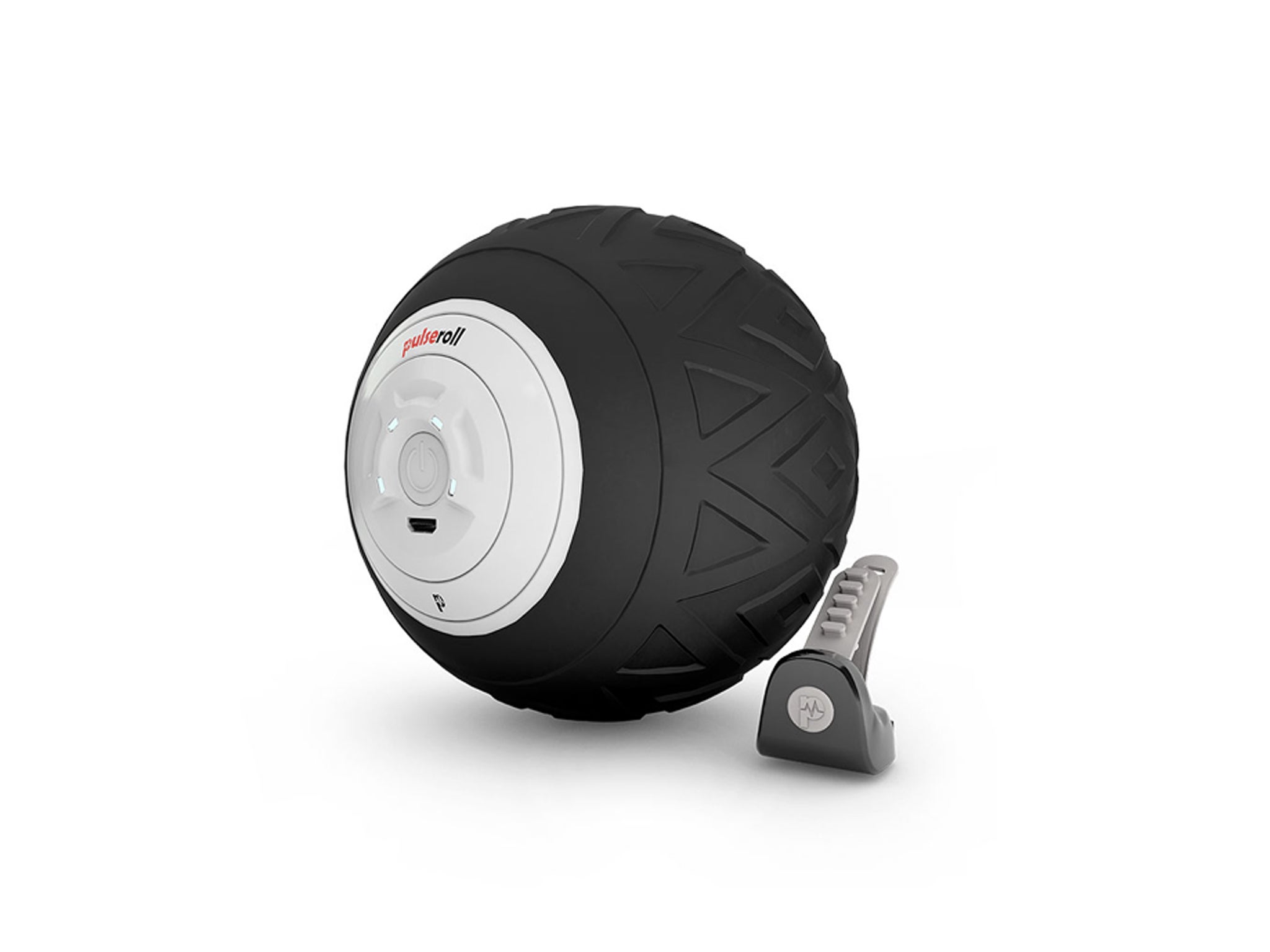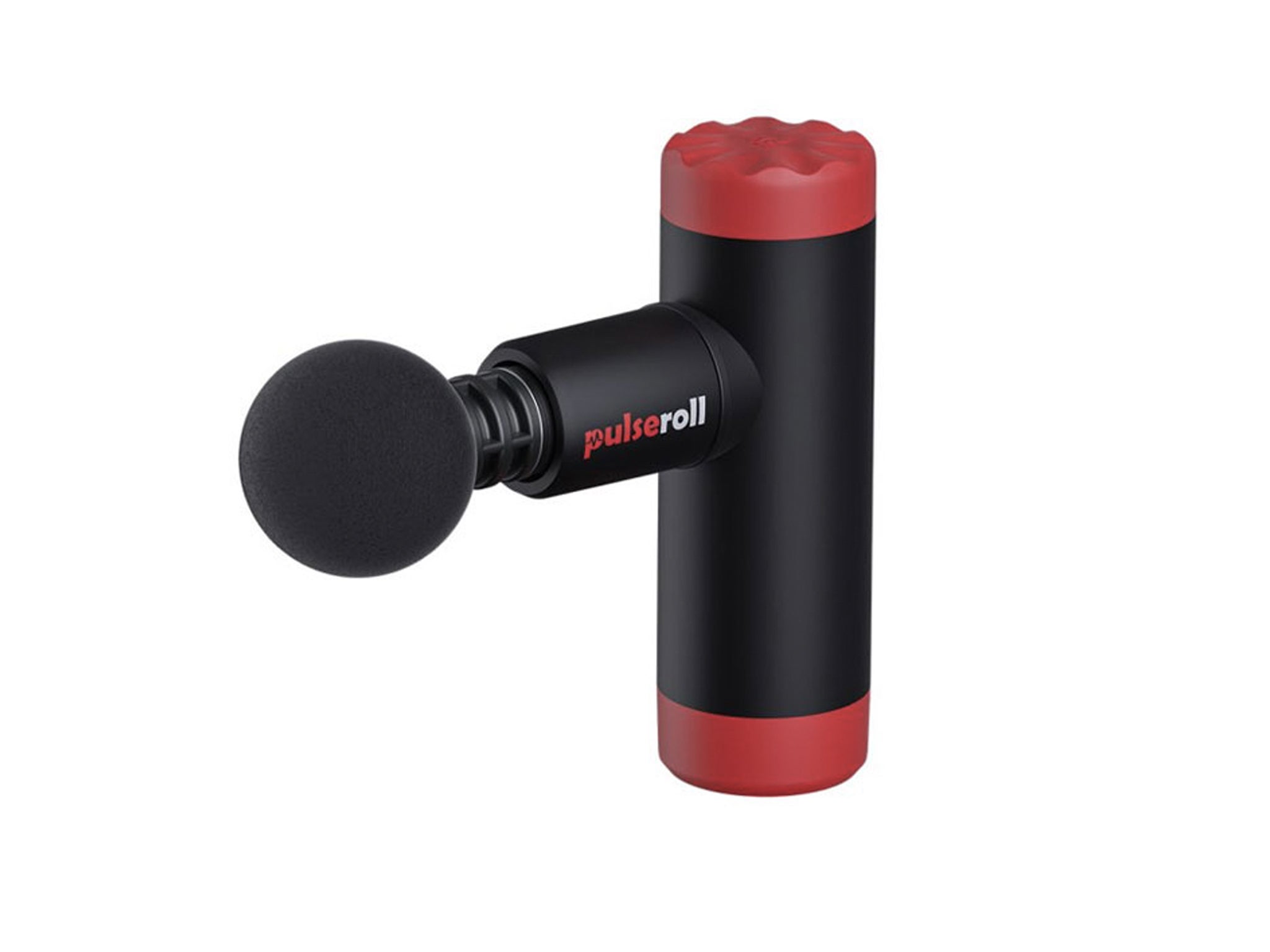
The Independent's journalism is supported by our readers. When you purchase through links on our site, we may earn commission. Why trust us?
Good vibrations: The best Pulseroll products for relieving aches, tightness and sore muscles
There’s a lot of buzz around these fitness tools, so we put them to the test

Whenever we’ve finished a particularly energetic CrossFit workout or completed a 10K training run, we’ve often wondered how nice it would be to have a qualified sports or massage therapist on hand. Someone who could routinely melt away the pain, no questions asked.
Well, now we needn’t wonder, as that’s precisely the idea behind the range of Pulseroll products. From massage guns to rolling devices – which blend pressure and vibration to reduce muscle tightness, stretch out tissue and generally aid recovery – our prayers have been answered.
The Manchester-based manufacturer has plenty of impressive endorsements for their line-up of percussive and vibrating healing machines. From Premier League clubs to British gymnastics and rowing, lots of teams are endorse Pulseroll products. Even Anthony Joshua himself, who, let’s face it, knows a thing or two about aches and pains is one of the brand’s biggest advocates.
While our training regime may not be as brutal as AJ’s, there’s no doubt that physical exercise can leave you with a hurtful hangover. This can be minimised if you increase blood flow to your muscles, which in turn, helps calm inflammation and speed up the recovery process.
Similarly, stiff and tight muscles should be worked on to aid mobility and stave off chronic pain. So, whether your pain is the result of DOMS or being deskbound for too long, some self-applied sports therapy could be the answer.
How we tested
We put a selection of Pulseroll products in the hands of different users – from runners in need of a recovery tool to those suffering from back and joint pain – to see what kind of relief they could get from using the machines. They all had one thing in common in that they were used to regular trips to the physio and massage therapist, so they could compare how the machines replicated the healing hands of the pros.
We were also looking to see what the advantages were of adding vibration to the conventional rolling machines. And, we were looking at each product’s ease of use, ergonomics and portability, as after all, these things are supposed to work with you, not against you.
Pulseroll pro massage gun

Best: For gym goers in need of deep tissue relief
Rating: 8/10
The pro is the newest iteration of the company’s massage gun and there is a definite step up in quality and utility from the original, which was already pretty good. For starters, the pro comes with a carry case, which will please anyone who was carting the original gun and its accompanying heads around loose in their sports bag or holdall.
Speaking of the heads, Pulseroll has added another two variations to the armoury (so that’s six in total). That meant that we had more options to find the right tip for the job at hand – whether that was using the gun to go to work on a particularly tight muscle or just trying to get some blood flowing to an area in the hope that it would cool out inflammation.
More thought seems to have gone into the ergonomics of the pro too because it was easy to hold even for prolonged periods of pummelling. Plus, its new extended design meant that we could even get those hard to reach areas, like the lumbar region of the back, so that it could offer relief there.
Clearly, Pulseroll has heeded feedback from users of the original because there is now a welcome groove in the back of the gun for the sadists out there who enjoy deep tissue massage, so you can place your thumb in the groove and really apply some pressure. And it’s the pressure of the pro that was the stand out feature for us because we found that, compared to other massage guns that we’ve tried, when we really dug deep with the gun it didn’t lose any of its power. We could really lean into a muscle without the machine losing any of its percussive power and ability to deliver maximum benefits to the target area without any performance fade.
The gun has an amplitude of 12mm, which is a measure of how deep it can go and again the pro impressed because in comparison to another gun we had on test, with an amplitude of 16mm, it actually felt like the pro was even more invasive – in a good way, of course.
There are four levels of operation, ranging from 1300rpm to 3300rpm, and we found that the two top speeds were too much for most of our testers (clearly, we had a couple of sadists in the mix). Most were happy for the pro to go to work at level two, which is 1800rpm.
We managed four and a half operating hours from just one charge, so you won’t need to be constantly juicing up the machine in order to get the most out of it. And as the battery level is displayed at the top of the handle, along with four LED indicators to show which of the four power levels the Pro is currently operating at, you never have to guess how long a session you have before it cuts out.
The pro is never going to replace a physio session but it does offer an instant hit of effective massage therapy right out of the bag, which could save you the delayed soreness that comes from working out.
Pulseroll vibrating foam roller

Best: For runners in need of recovery
Rating: 10/10
If you’re a gym goer, a runner or you just suffer from some tightness in certain areas of your body you will probably have been prescribed a foam roller by a chiro, physio or fellow workout buddy. They’re a handy tool for rolling out quads, calves, hips and IT-bands. But when you can buy one for around £20, is there any benefit to adding some vibration?
The simple answer is yes, if you regularly roll. The addition of four different intensities, ranging from 1500rpm to a buzzing 3900rpm (which can be operated via a handy remote while rolling) can present serious benefits in terms of the amount of time that you need to be on the roller for before you start to feel the same benefits that you would get from a non-buzzing roller.
Our full routine is usually 16 minutes long and when we do have time to complete it we definitely feel the benefits, but we don’t always have time to spend the physio prescribed two minutes per muscle. However, we found that when using the Pulseroll roller, we reached that same level of comfort in just eight minutes as we only seemed to need one minute per muscle, which was a real revelation and very freeing in terms of our wider workout routine.
There’s something about the vibrations that help you really focus on where the roller is on the muscle. And it also makes it much more comfortable to really bear down on to the roller, which we found particularly useful when we were rolling out our quads, for example, with our elbows supporting our upper body. In fact, the vibrations of the Pulseroll made it much easier to sweep up and down on a muscle. In this way, it really takes a lot of the work out of rolling, while still imparting the necessary benefits.
We also found that the roller was particularly useful when we were concentrating on a very tight IT-band (which needs to be constantly managed to keep us healthy for running). Moving a conventional roller up and down our thigh for two minutes can be excruciating, however the Pulseroll really alleviated the pain while we were rolling while at the same time conveying the benefits of loosening the band itself.
We got three hours of usage from a single charge and the handy grab bag means that you can take the roller away with you making it a real asset on race day if you’re a dedicated runner and well worth the extra outlay. Oh, and for some added value and to amuse any children or pets in the house, you could also just stand the roller on its end, turn it to its highest intensity and watch it go crazy on its own.
Pulseroll vibrating single ball

Best: For getting into those really tight spots
Rating: 7/10
As with the roller above, Pulseroll has taken a physio ball and given it the buzz factor – with four vibration levels, ranging from 2200rpm to 4000rpm, which can be controlled via a remote. The ball is actually an outsized physio ball which seems to make it easier to pause on tender spots and this works in combination with the vibrations to keep the muscle relaxed, while the ball really manages to get into the tissue.
We found this particularly beneficial in the section of our usual routine which focuses on our hip-rotators because usually we find the position difficult to maintain and uncomfortable to perform. However, we found that it was not only much easier to roll on the larger ball with our full weight, but the vibration took away a lot of the discomfort so that we could spend more time on the area than usual. Similarly, it was great for tight hamstrings too, whether that was a result of a run or just sitting too long at a desk.
With a roller, you often have to get into some quite weird and wonderful positions in order to hit a particularly tight area of muscle and stay on it. But the ball is much more targeted and easy to use for this purpose. Obviously, there are some clear advantages in terms of portability too, with the ball charging up in just under three hours and then holding that power for six, so you can take it away with you knowing that it will take up a minimum amount of space in your bag and it won’t weigh you down.
Pulseroll mini massage gun

Best: For soft tissue massages
Rating: 7/10
There’s almost a £100 saving between Pulseroll’s pro gun and the miniaturised version, which begs the question: what does the pro have that the mini doesn’t?
To start, the amplitude of 12mm is the same, but the operating speed range is slightly different. The mini has the same four speeds but starts at 1500rpm and cycles through to top out at a respectable 3000 rpm. This is 300rpm less than the pro’s max speed, but as mentioned earlier, those top speeds weren’t actually used for recovery and relief as they were deemed slightly too powerful. So the speeds you get from the mini are actually a lot more useful for massage and stimulation.
The pro also has six tips while the mini only has four. However, Pulseroll has curated them to include a spinal head for spinal massages, a bullet head for pain point management, a round head for any area of the body and, finally, our favourite, the pneumatic head which can deliver a soft tissue, full body massage.
Ergonomically, it’s a little more difficult to apply as much pressure as the pro because the handle is completely rounded out. But, the mini still packs a punch and we didn’t experience any drop in our selected rpm even when we were pushing in hard to certain areas. Charging was never an issue either, with the gun operating for a mighty six hours from a pretty minimal two-hour charge. Plus, it comes with another of Pulseroll’s quality carry cases.
If your fitness regime often makes you feel like you’ve gone 12 rounds with brand ambassador AJ, then the pro’s ability to really dive deep into muscle tissue might well make the extra outlay worth it. However, the mini is a real pocket rocket when it comes to simply reducing muscle tightness and delivering a thorough massage that can either reduce soreness after a workout or simply maintain and improve mobility levels.
The verdict: Pulseroll products
No matter what you usually present with at a physio’s appointment, you will find something in the Pulseroll range that can supplement and help with the problem. However, the vibrating foam roller occupies a real sweet spot in terms of outstanding value and the opportunity to completely transform a regular rolling routine so that you get more out of your time on the roller, in terms of recovery and tissue release.
Voucher codes
For offers on fitness equipment and sportswear, try our discount code pages:
We also put two of the biggest names in massage guns head to head – read our comparison between Theragun and Hypervolt